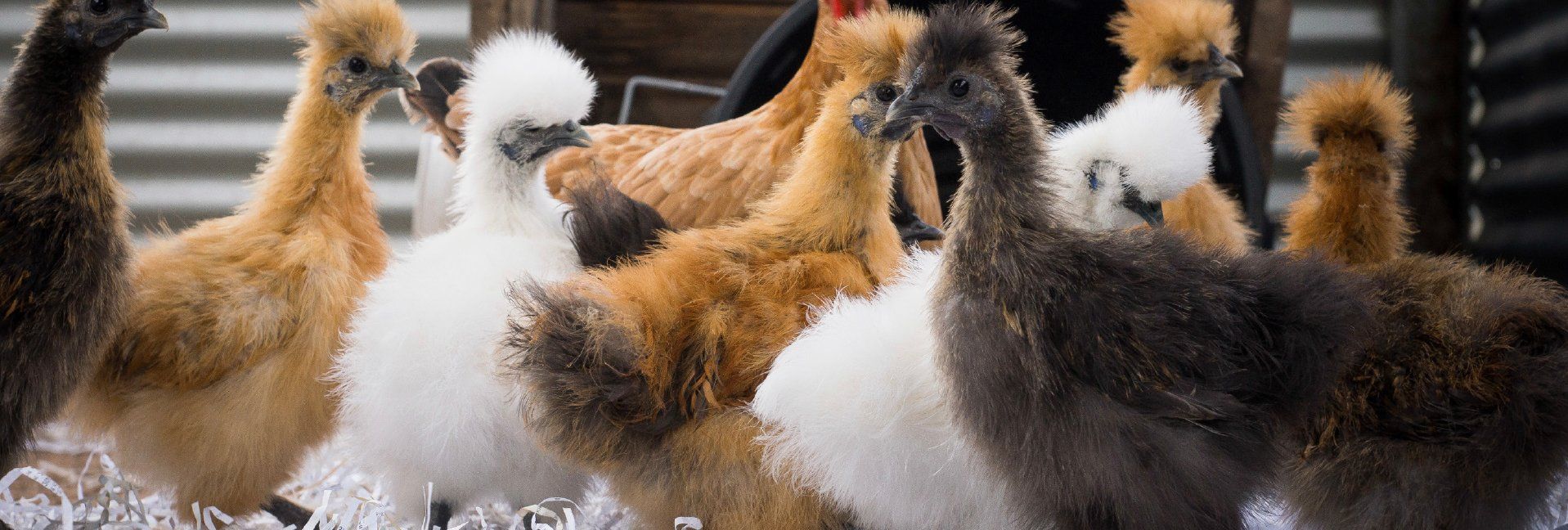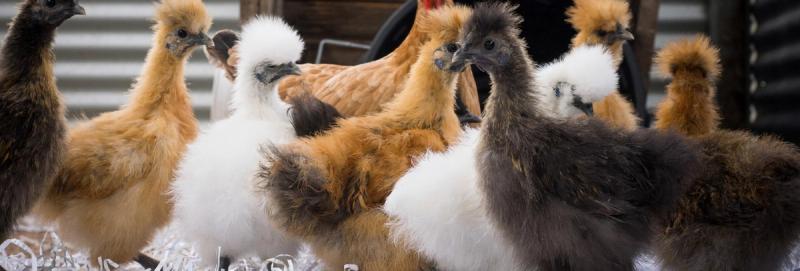Are Silkies Right for You?


I have owned and bred Silkie chickens exclusively for more than thirteen years. I started out with a typical backyard flock assortment of different breeds of chicken. Then I saw and read about Silkies on the internet and instantly became obsessed with them.
They are eye candy in your flock, with the wow-factor that makes people fall in love with them

Purchasing some through our local feed mill—I was thrilled to find them—just made me want more. So I did some research and bought some quality stock from a local breeder who specializes in Silkies. She recommended starting with a Blue/Black/Splash pen because you will not need to keep the colors separated. They will always breed true to those three colors. From there, I branched out and now breed seven different colors of Silkies.
Silkies are different from every other breed of chicken, which is what makes them so attractive to the average chicken owner. They are an ornamental chicken. They lay eggs like any other chicken, but they are not known as “layers,” though they do lay about 100 eggs a year.
More than beauty
The temperament of Silkies is what makes this breed a great pet. They are gentle and docile. They do not wander far from their food dish and are easy to find at the end of the day.
They are great for families with children because they are easy to catch and easy to hold. Plus, they are often quieter than most other chicken breeds. Seniors love them because they are an easy-care pet and can even live indoors (provided they have chicken diapers.)
They make great therapy birds—just hugging them makes you feel better.
Birds of the feather
The Silkie name comes about from the softness of their feathers. They feel a lot like an angora rabbit when you pet them. This softness is caused by the fact that their feathers do not stick together with barbs as most bird’s feathers do.
Silkies cannot fly because of this. I find this fact to be a plus in chicken owning. My first flock contained chickens that liked to fly onto tree branches at night and I was always trying to get them down out of the trees. Not so with Silkies; they cannot fly up to a high roosting bar but do like to sleep in a heap together on the floor at night.
Silkies have black skin and bones. They have a mulberry-colored walnut comb and beautiful turquoise ear lobes. They have five toes and fluffy feathered feet.
Gender differences include a fancy powder puff top-knot crest for the girls and a slicked back Elvis look with streamers for the boys.
Silkie chicks are often born with vaults which makes their crests look large for the first few weeks. Silkies are smaller than the average chicken and are classified as Bantams. Smaller birds means that you will be able to fit more in your coop!
Origin and variations
Originally, Silkies came from China. Marco Polo mentioned “furry chickens” when he explored that area in the 1200s. Coming from the mountains of China, Silkies do very well in cold weather. Our Minnesota winters don’t seem to bother them.
The variety of colors in the Silkie world is what keeps people coming back for more. The American Poultry Association’s Standard of Perfection lists White, Black, Buff, Blue, Splash, Gray, Partridge, Self Blue, and Paint. These are the colors of Silkies that can be shown in a poultry show.
Breeders also have non-accepted colors such as Red, Porcelain, and Cuckoo. I find that people enjoy collecting different colored Silkies for their backyard flocks. When buying chicks, my customers often ask for one of each color.
An unforgettable experience is giving your Silkie a bath and then fluffing them up with a hair dryer
You can trim their toenails and beaks and give them a true spa treatment. Make sure that your Silkie can always see by trimming the feathers above and below their eyes.
Care and pet life
One thing I have learned over the years is that Silkie chicks can be fragile. I always recommend adding vitamins and electrolytes to their water. Adult Silkies should be given a feed that is higher in protein, such as a gamebird feed of at least 20% protein. Because of their vaulted skulls, Silkies are prone to head injuries.
Their gentle, quiet nature can also make them targets for predators, so they do need to be watched when free-ranging. They don’t bother other breeds but do tend to be picked on in a mixed flock due to their gentle nature.
Raising chicks from a young age will increase your bird’s attachment to you. Silkies are friendly and the perfect pet for families with young children. Treats are always welcome and are a great way to bond with your Silkie.
Gentle Silkies are sweet and loving, making the perfect pet chicken.
Tags:Seasonal Living

Acreage Life is part of the Catalyst Communications Network publication family.
















